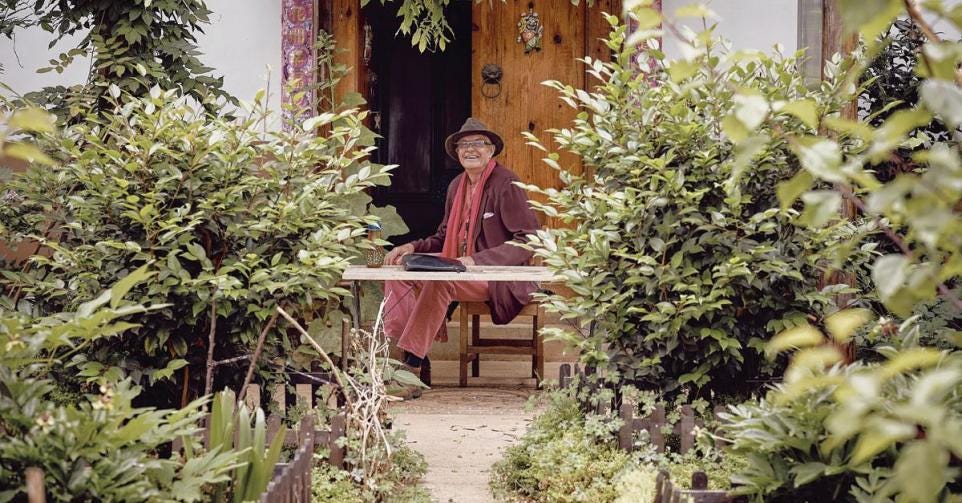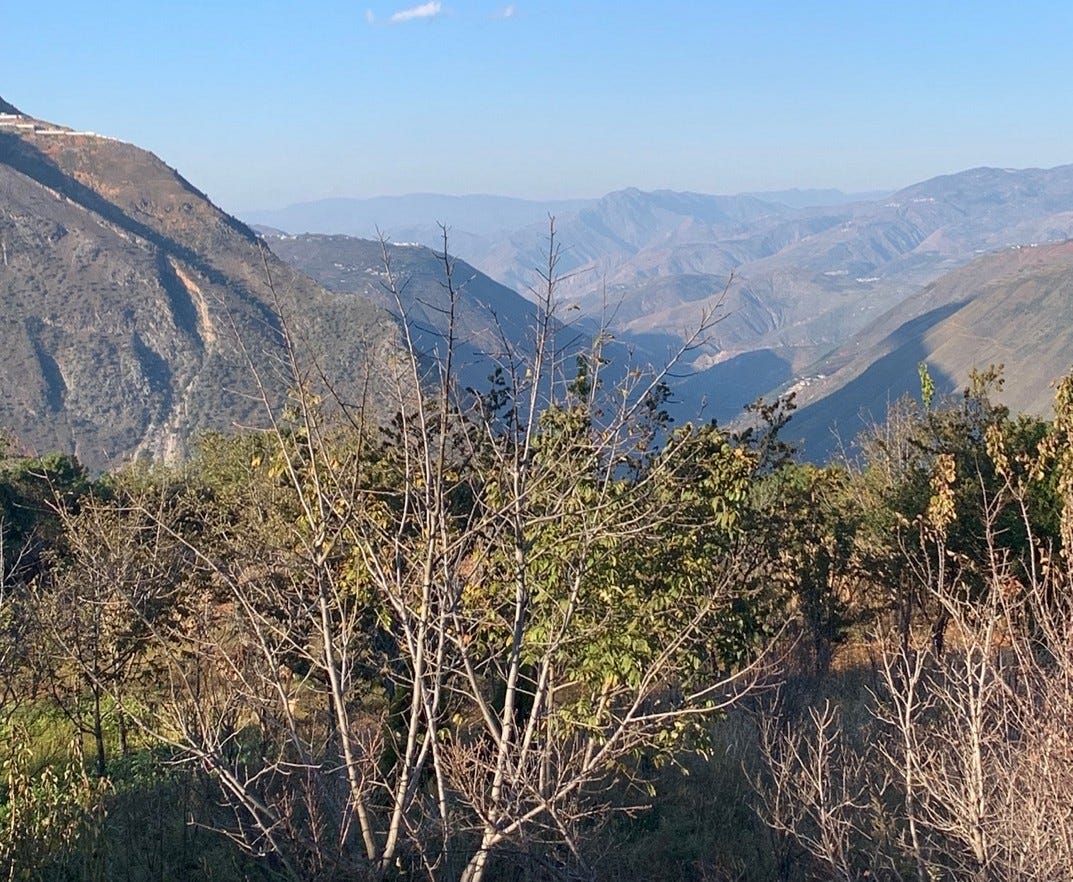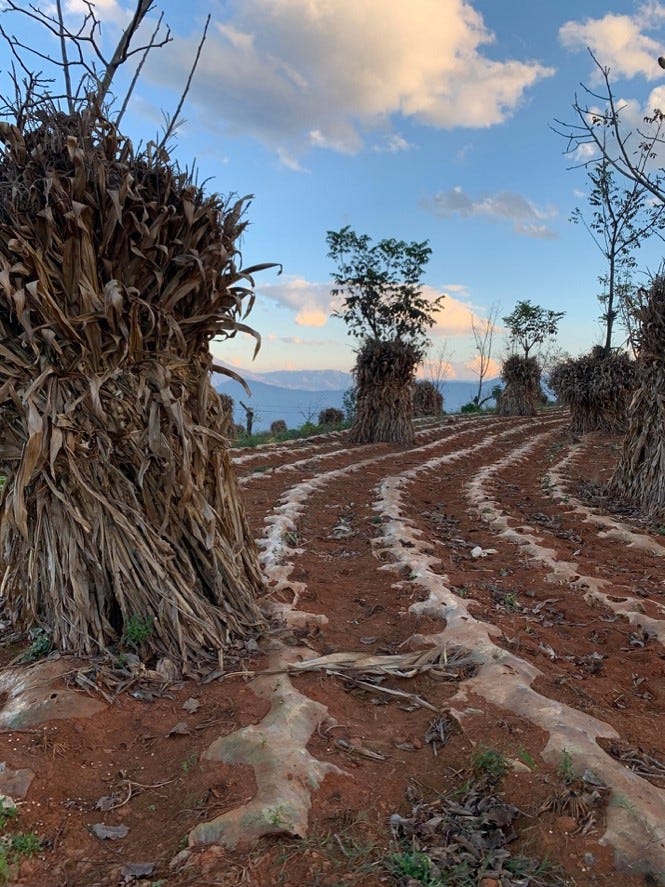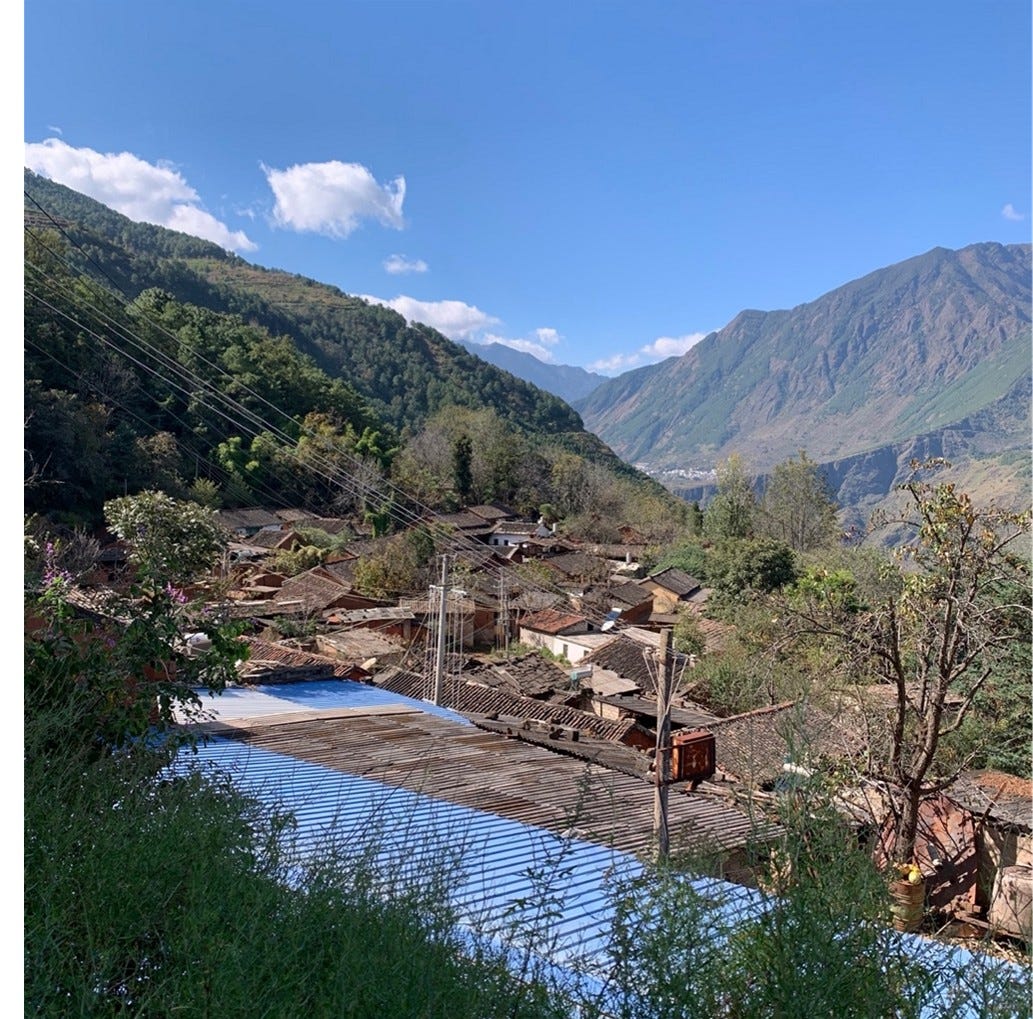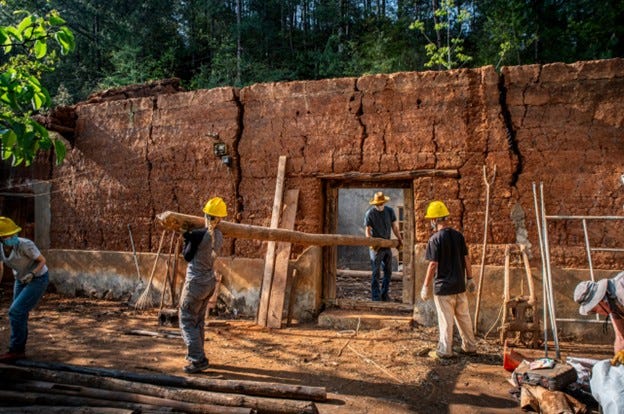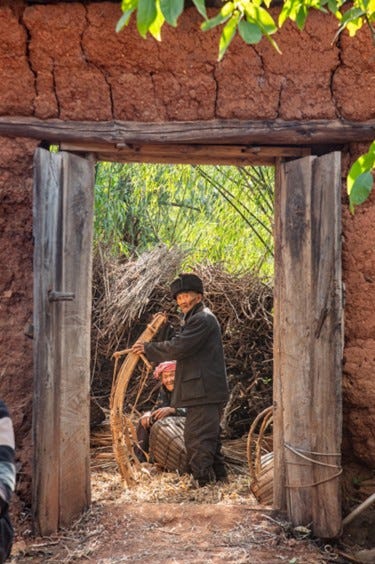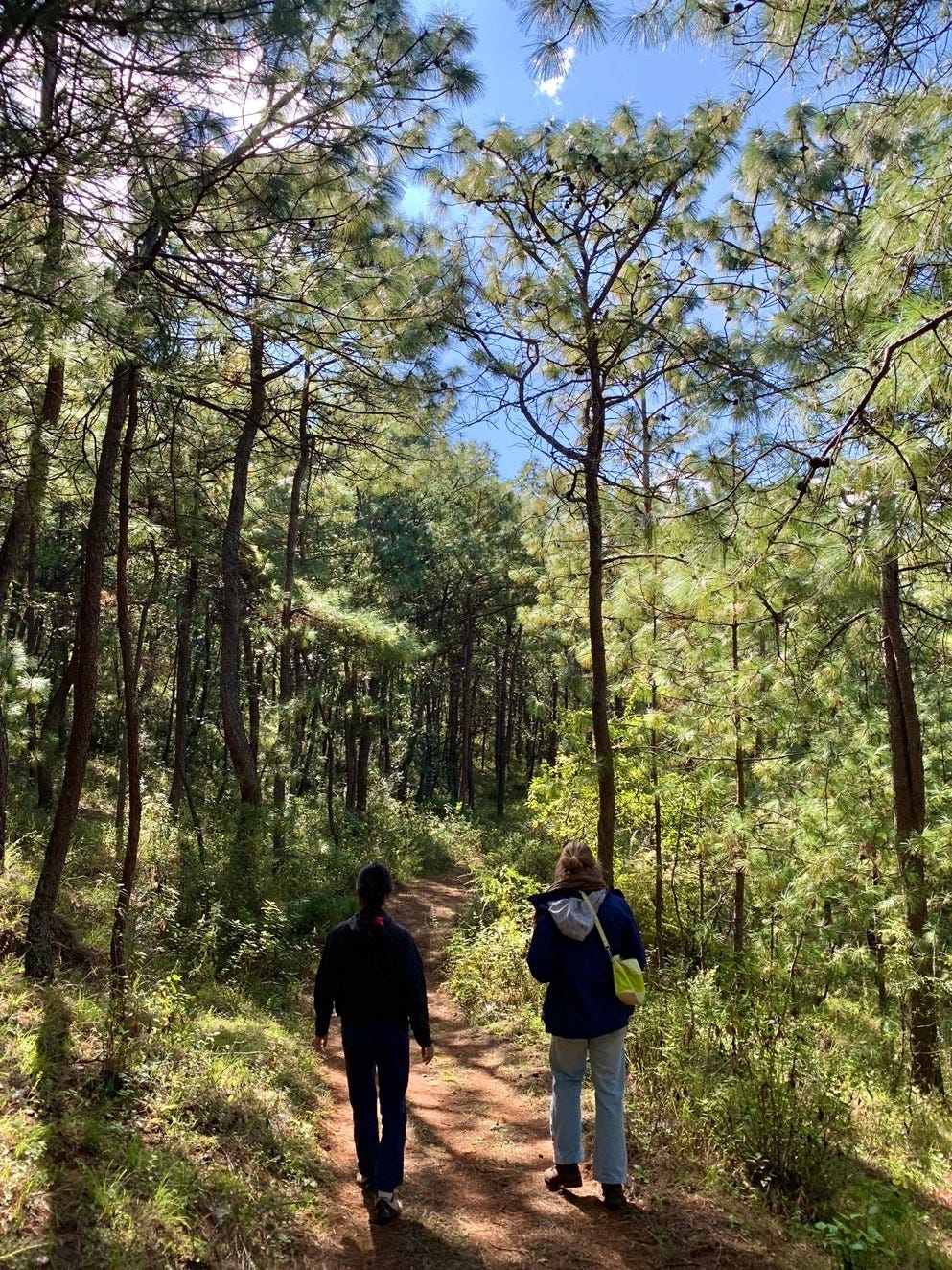Diplomacy on High Terraces
How a former foreign diplomat is building a sustainable and ecologically-minded community in rural China.
Editor’s Note
Today’s article is by Paule De La Poype, a Franco–New Zealander whose work moves between land, language, and community. Raised in rural France and now based in Hong Kong, Paule writes on ecological renewal in China and beyond, including Digging Deep | 挖根. Since 2021, she has turned from diplomacy toward the slower, more rooted work of farming and community building.
From Foreign Affairs to Yunnan Fields
Patrick Nijs is no ordinary diplomat. After spending most of his career in Asia—culminating in his posting as the Belgian Ambassador to China from 2009 to 2013—he chose an unconventional retirement: settling in rural Yunnan as an organic farmer. Since 2012, he has officially lived in the high mountains of Yunnan, though diplomacy remains central to his life. He continues to travel across China, speaking at conferences about the future of ecology and environmental protection.
Patrick’s work reflects a broader vision: fostering cooperation between China and Europe on ecological and environmental issues. “We are heading into the toughest times for our species. We need to bring people together to deepen understanding and cooperation. There is consistent ecological content in Chinese policy. This is an opportunity for both Europe and China to face these challenges together.”
In 2017, he co-founded the EU-China Joint Innovation Centre in Brussels. More recently, in 2023, he and his partners launched the Deqing Europe-China Centre in partnership with the Huzhou local government. That same year, they organised the first international symposium on China-Europe ecological cooperation in Moganshan. The second edition will take place on 11 May 2025, in Shanghai, focusing on circular economy and employment, timely topics in light of China’s domestic challenges with youth unemployment, intense job market competition, and worker burnout.
At the upcoming event, Patrick’s team will present two key projects underway in Yunnan: the development of an organic farm and the restoration of a traditional abandoned village called Laozhuandi into an ecological community.
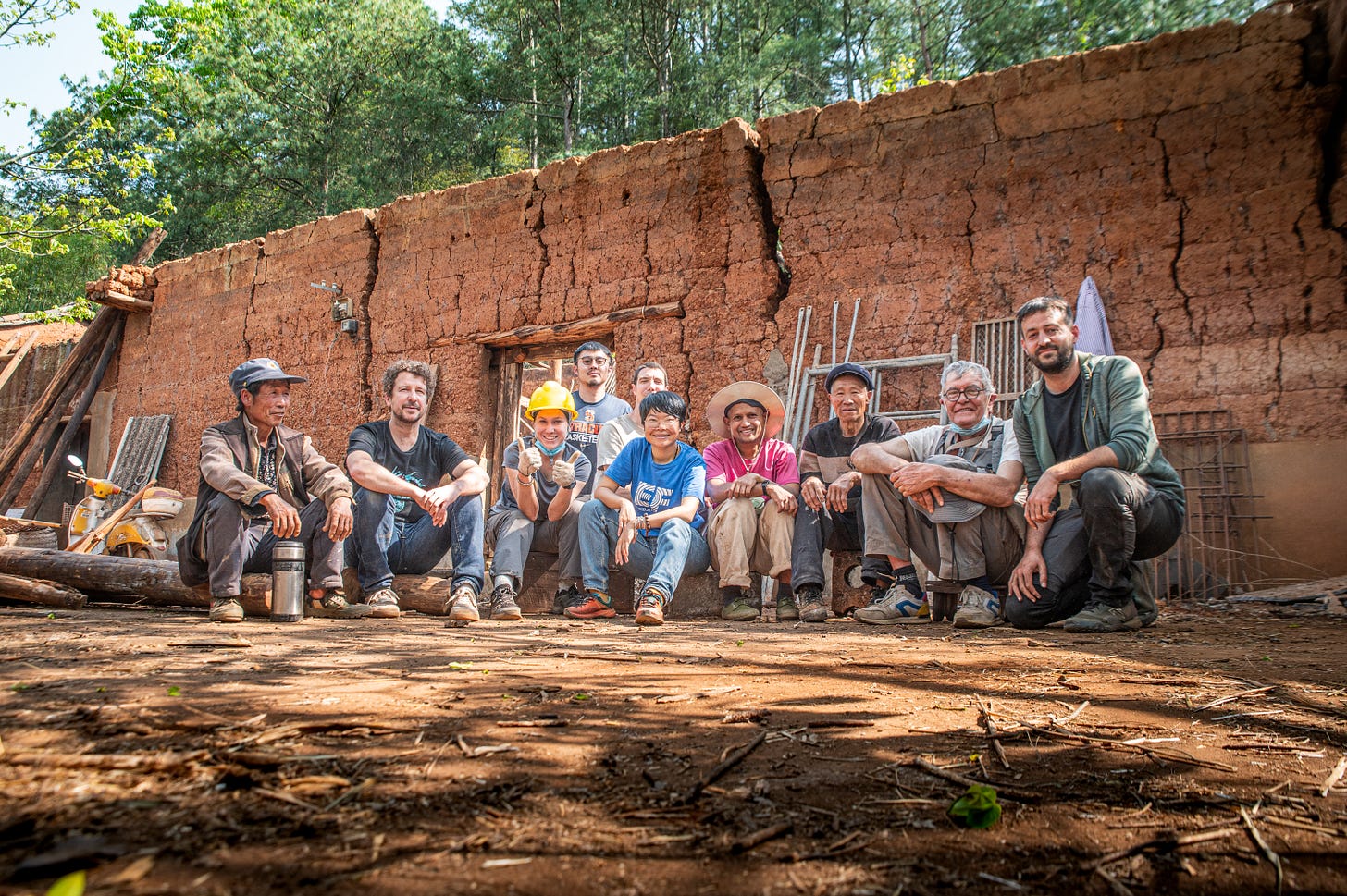
Organic Farming at 2,000 Meters
The Kabissa organic farm—named in tribute to Patrick’s childhood in Congo—is his home and his team’s headquarters. Located a few hours north of Kunming, near the Sichuan border, it sits in the Dongchuan district, a region renowned for its biodiversity and its Yi and Hui ethnic communities.
Now 12 years old, Kabissa is a regenerating farm tucked discreetly into the northern face of a mountain at 2000 meters of altitude. At its centre is a large modern Chinese villa, with a glasshouse on the eastern wing overlooking seven terraces of agroforestry. These terraces support a mix of staple crops, vegetables, nuts, and fruit. A buzzing permaculture garden—dotted with chicken coops—lies just in front of the house.
On the other side of the fence, neighbouring plots remain bare and eroded. Many local farmers are still sceptical of regenerative organic methods and stick to the conventional approach: plastic tarps, synthetic fertilisers, and monocultures. These methods were widely introduced through national programs from the 1980s aimed at boosting agricultural productivity and reducing rural poverty.
For the past decade, the Kabissa team has worked with locals to restore soil using permaculture techniques: no chemical inputs, no-till farming, mulching, intercropping, and perennials. Farming at 2,000 meters brings its own set of challenges—scorching sun, drying winds, and intense rainy seasons—but the yields include a rich variety of fruits, vegetables, cereals, wild honey, medicinal herbs, and delicacies like Yunnan truffles.
Local villagers are integral to the daily running of the farm, from tending crops to caring for animals. Communal meals encourage cultural exchange, although most locals speak a dialect quite different from Mandarin. While foreigners are rare in this area, visitors are warmly welcomed and often find themselves learning from the locals.
Restoring a Village, Building a Community
Patrick’s second major initiative centres around Laozhuandi, an abandoned village just a short walk from the farm. Comprising around 30 rammed earth houses, the village was once entirely off-grid, with homes built from local materials and families raising animals in their yards. About a decade ago, like in many rural areas, residents relocated to a newer settlement across the mountain with better roads, modern housing, electricity, and sewage systems.
Today, a small group of professionals from across China—each investing in one of the old houses—has joined Patrick in restoring the village. Together, they are creating an ecological community of households and micro-enterprises. The local government will fund the first phase of public infrastructure renovation as part of broader rural revitalisation efforts.
Julien Colas, a French architect based in Beijing and co-founder of a MAYU studio, is the lead architect for the restoration project. Selected for his ecological approach, he focuses on repurposing materials found on-site and preserving traditional building techniques. “In Beijing’s hutongs, many old houses have been concreted over, trapping humidity inside. Here, we’ll use breathable materials that help the rammed earth regulate temperature and moisture naturally.”
A young local carpenter has taken over his father’s trade and will handle the woodwork. Masonry presents more of a challenge—only one elderly villager still knows the traditional rammed earth method. A team from Kunming may be brought in to collaborate and help preserve these fading skills. In early April 2025, the project held its first participatory construction week, bringing together villagers, volunteers, and key stakeholders. During dismantling a roof, former residents returned to share memories and retrieve belongings left behind years ago.
The eco-village project falls within China’s broader vision of “ecological civilisation,” a framework that promotes rural revitalisation and sustainable development. At the same time, it offers a platform to celebrate and preserve local heritage. Though the project may take years to complete, it has the potential to become an inspiring model for remote communities across China, revitalising the countryside and encouraging younger generations to return and take part in its renewal. The path to the village will hopefully be walked by many more, Chinese and foreigners alike.
Further Reading
If Paule’s reflections resonated with you, I encourage you to subscribe to her Substack, Digging Deep | 挖根, where she continues her exploration of ecology, agriculture and culture in China & beyond.



